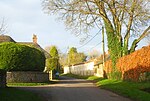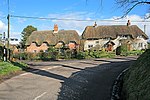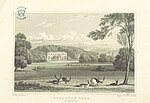Hampshire Downs

The Hampshire Downs form a large area of downland in central southern England, mainly in the county of Hampshire but with parts in Berkshire and Wiltshire. They are part of a belt of chalk downland that extends from the South Downs in the southeast, north to the Berkshire and Marlborough Downs, and west to the Dorset Downs. The downs have been designated a National Character Area (NCA 130) by Natural England, the UK Government's advisor on the natural environment. To the north lie the Thames Basin Heaths, to the east the Low Weald (Western Weald), to the south the South Hampshire Lowlands and the South Downs, and, to the west, Salisbury Plain and the West Wiltshire Downs.The northern boundary of the Hampshire Downs follows a line from just north of Walbury Hill in Berkshire to Basingstoke and Farnham, forming a ridge and dramatic escarpment which rises to over 290 metres, overlooking the Thames Basin. In the east the boundary runs from Farnham to Alton, then swings southwards to Petersfield, forming an escarpment at the western edge of the Weald, including an area known as the East Hampshire Hangers. In the south the boundary runs westwards to Winchester, south to Twyford and Otterbourne, then west-northwest to Michelmersh; and in the west from Michelmersh through the Wallops to Ludgershall in Wiltshire, and back to Walbury Hill.The main rivers of the Hampshire Downs are the Test and River Itchen. The main settlements in the area are Andover, Alton, Basingstoke and Winchester. 20% of the area (the North Hampshire Downs) falls within the North Wessex Downs AONB, and around 6% within the South Downs National Park.
Excerpt from the Wikipedia article Hampshire Downs (License: CC BY-SA 3.0, Authors, Images).Hampshire Downs
Long Walk, Winchester Micheldever
Geographical coordinates (GPS) Address Nearby Places Show on map
Geographical coordinates (GPS)
| Latitude | Longitude |
|---|---|
| N 51.14 ° | E -1.24 ° |
Address
Long Walk
Long Walk
SO21 3BP Winchester, Micheldever
England, United Kingdom
Open on Google Maps









